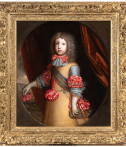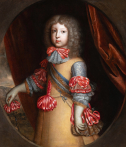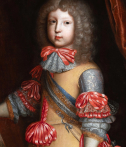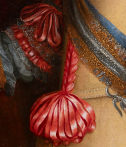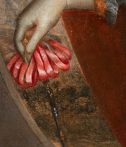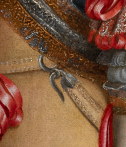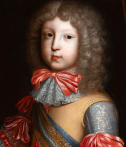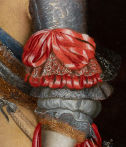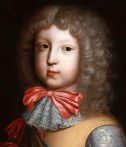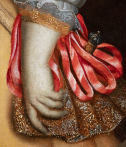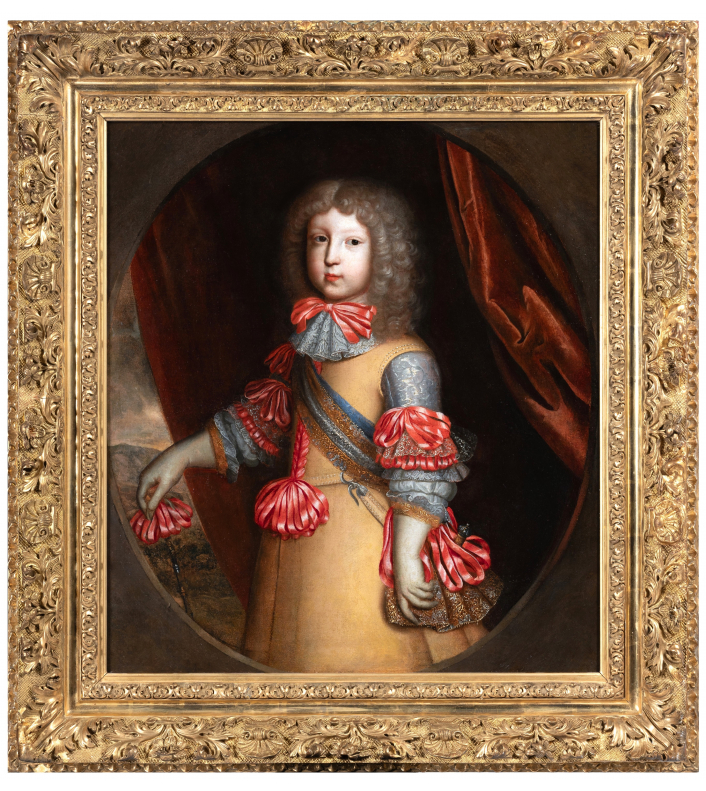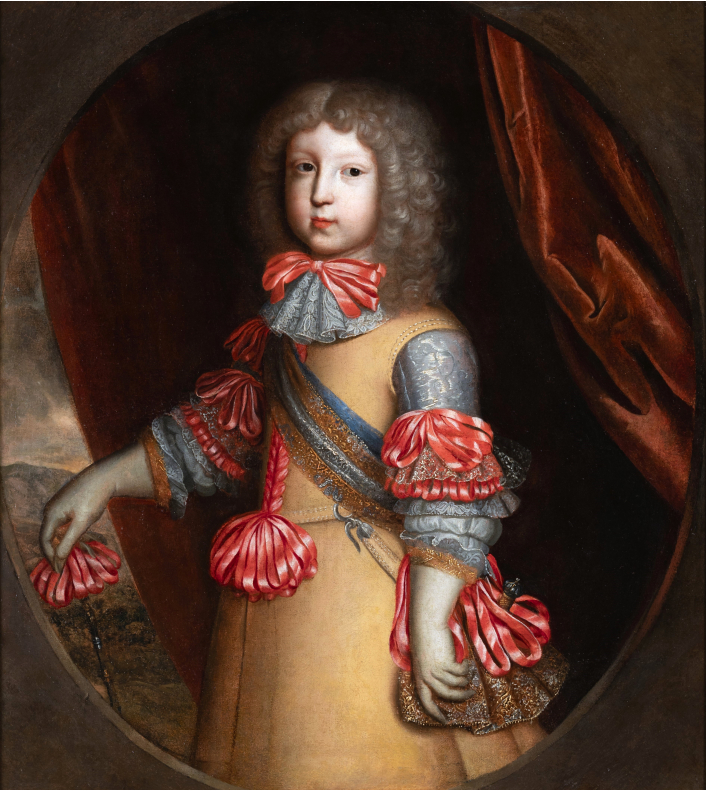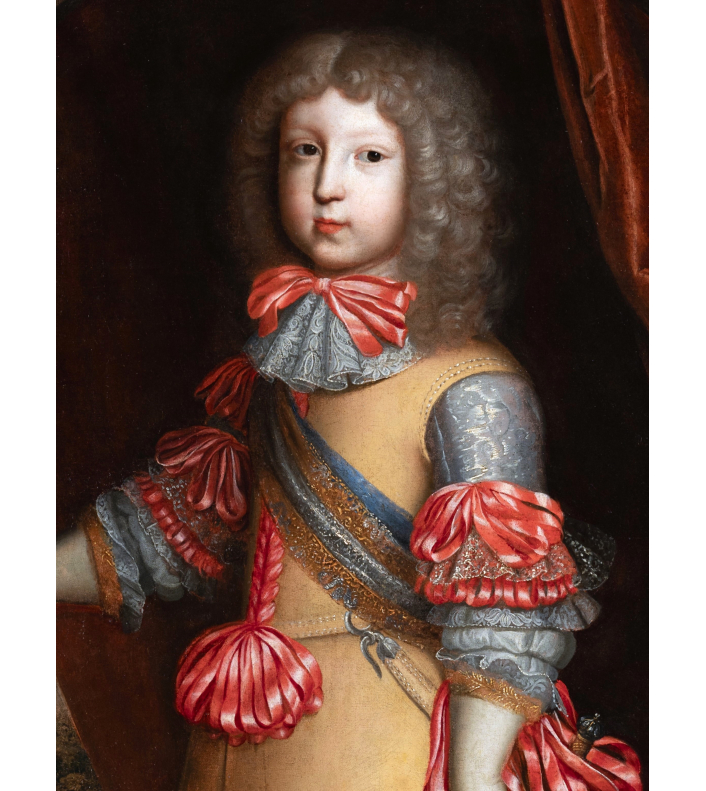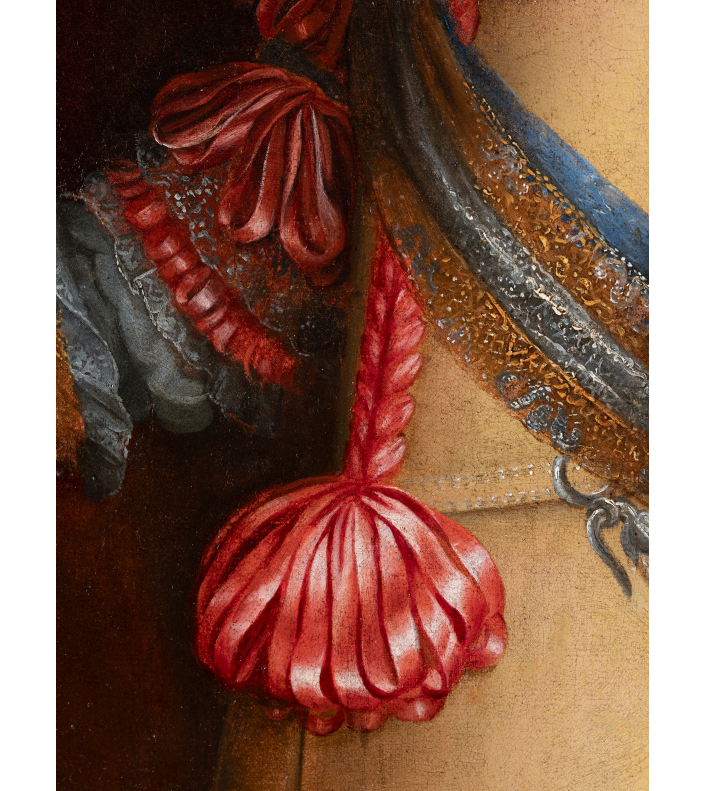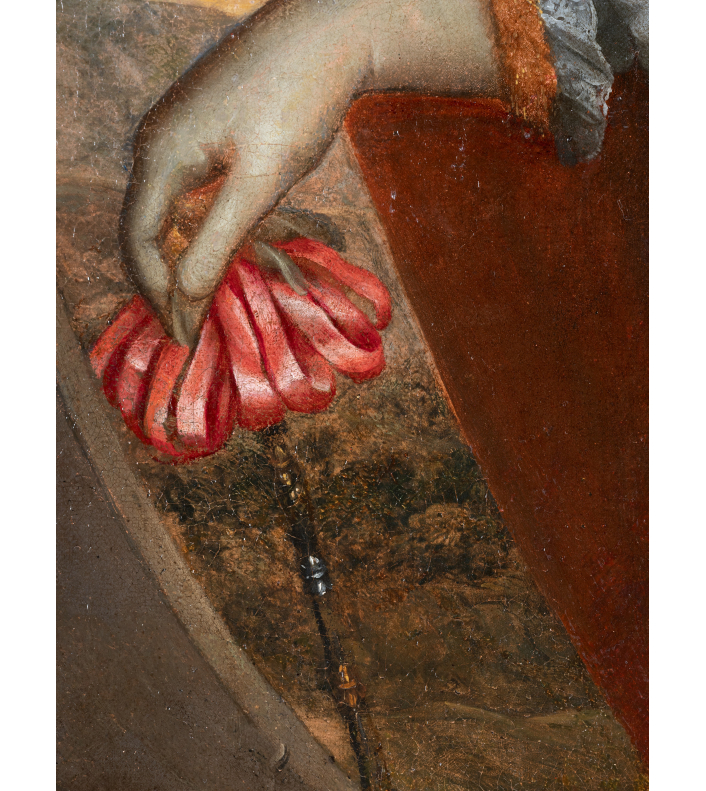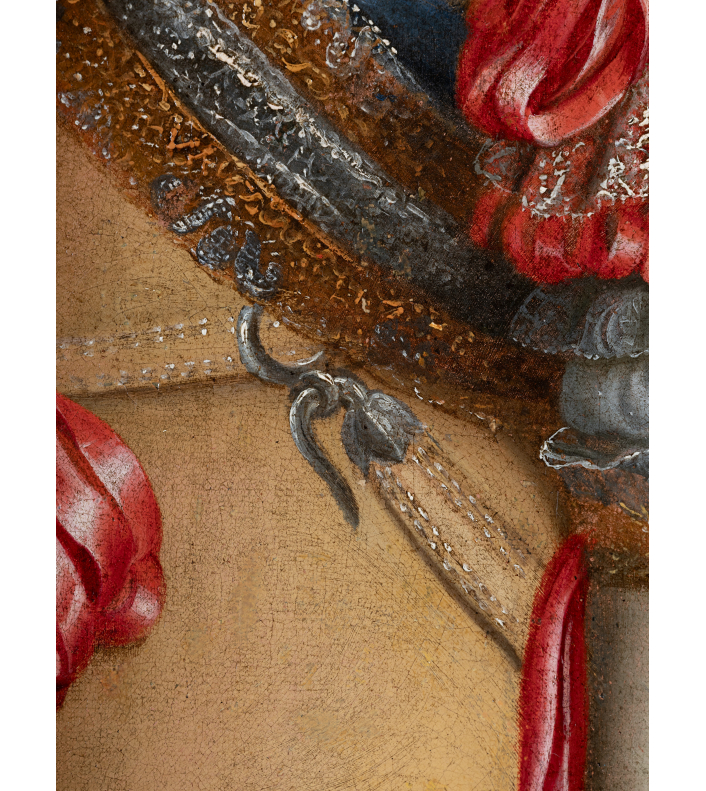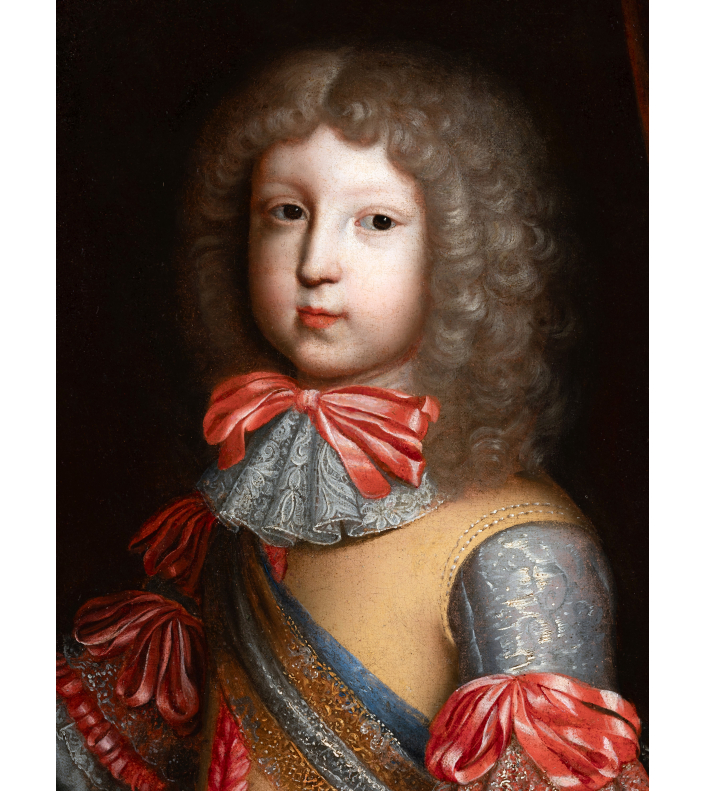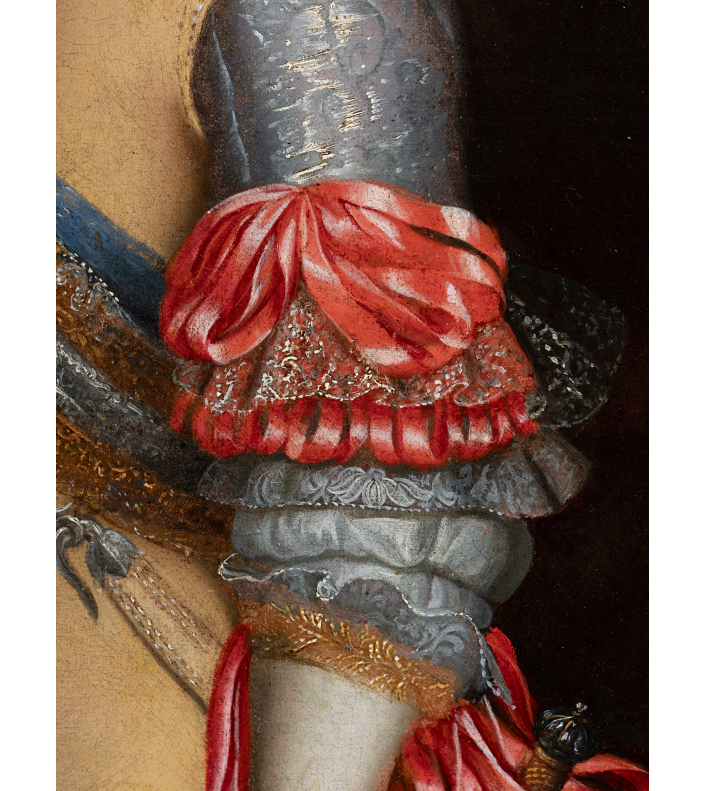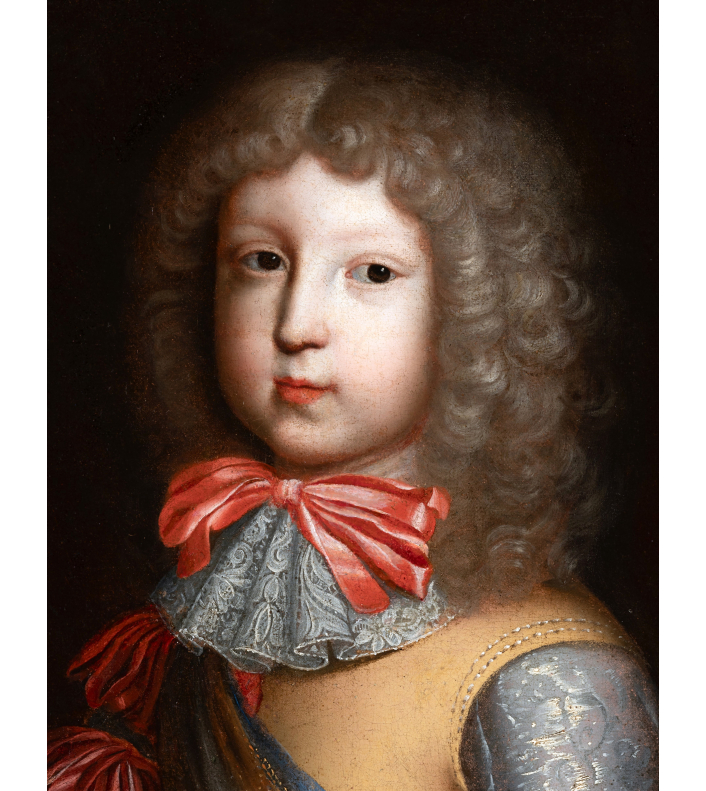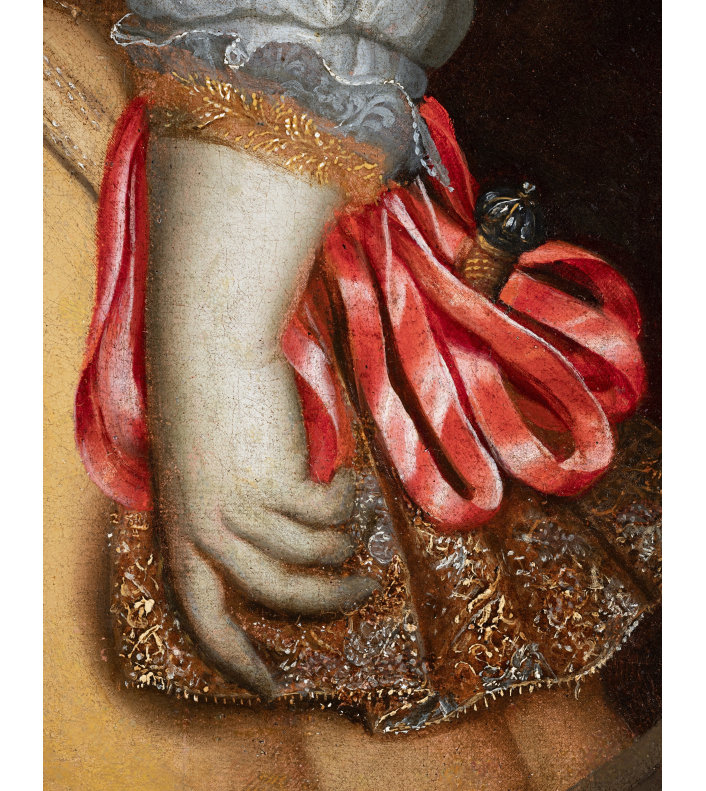Portrait of Louis de France (1661 -1711), known as the Grand Dauphin, son of Louis XIV and Maria Theresa of Austria.
17th century French School, circa 1670
Workshop of Beaubrun Henri (1603-1677) and Charles (1604-1692)
Oil on canvas, h. 79 cm, l. 70cm
Louis XIV style giltwood and stucco frame
Framed: h. 107 cm, l. 99cm
Rare ceremonial portrait of Louis de France, aged around 10, wearing rich miniature clothes following the men's fashion of his time.
He is standing, turned in three quarters, his gaze with a solemn expression contrasts with his baby face with full cheeks which appears in the middle of thick blond curls falling on his shoulders. He wears a tobacco-colored cloth jacket which hides a shirt of which we only see the silver-embroidered sleeves. He wears the blue cord of the order of the Holy Spirit slung over his shoulder, and over it a ribbon embroidered with gold and silver. The white lace tie at her neck is enhanced by a coral ribbon bow. The same ribbon trimmings decorate his sleeves, his cane, and his sword holder. Her hands are wrapped in long white gloves, and the wrists are decorated with bows of ribbon.
His sword, the hilt of which can be seen among the ribbons, is attached to a centurion. Curious that this might appear on such a young child, the sword and the cane were only fashion objects under Louis XIV, rather than a military badge.
His figure stands out against the background of a large crimson velvet curtain whose cleverly constructed folds are raised to expose the distant horizon.
The first son of Louis XIV, he's obtained the title of Monseigneur or the Grand Dauphin at his birth, he has always been in the centre of particular attention being the sole successor to the French Crown.
From its birth, a clever communication campaign was put in place to promote the dynastic sustainability of the Bourbons. The distribution of portraits of the heir of Louis XIV helped consolidate the monarchy.
In some portraits he is represented alone, in others he is with his mother Maria Theresa of Austria (see the full-length portrait kept in the Prado Museum in Madrid, painted by Pierre Mignard around 1664, inv. P02291) or with his grandmother Anne of Austria (see the one kept at the Palace of Versailles and painted by Beaubrun around 1665 (inv. MV 9157)).
Most of his portraits were executed by painters working for the French court, the Beaubruns, Jean Nocret or Pierre Mignard.
Our portrait is a workshop variant of Charles and Henri Beaubrun, the original painting (lost or destroyed) is known from two engravings by Nicolas de Larmessin and would have been painted by the Beaubruns around 1671.
However, there remains a second portrait very similar to ours kept in the Padua museum in Italy, the clothes are identical, yet the hairstyle of loose curls and the less chubby face could indicate a slightly older age.
Related works:
- Portrait of Louis de France, Padua, Museum of Fine Arts, Italy, circa 1670?
- Louis de France, Engraving by Nicolas de Larmessin after Beaubrun, circa 1671, Palace of Versailles, inv. GRAV 4087
- Louis de France, Engraving of Nicolas de Larmessin as a bust, after Beaubrun, Palace of Versailles, circa 1671, inv. LP44-3(2)
- Louis de France, c. 1663, Beaubrun Charles and Henri, Prado Museum, Madrid, oil on canvas 129 x 98 cm, inv P002232
- Louis de France, , around 6 years old, oil on canvas, attributed to Jean Nocret, around 1668, 175 x 128 cm, Prado Museum (Madrid) deposited at the Royal Palace.
Louis de France, known as Monseigneur, or the Grand Dauphin after his death, was born in Fontainebleau on November 1, 1661 and died at the Château de Meudon on April 14, 1711.
The eldest son of Louis XIV and Marie-Thérèse of Austria, destined to succeed his father, Monsignor the Dauphin benefited from a specific education and training that Louis XIV wished to be the most successful.
Monsignor took part in several military campaigns between 1688 and 1694, including the glorious capture of Philippsburg in 1688.
He died at the age of 49 without ever having reigned.
Charles Beaubrun (1604-1692), Henri Beaubrun (1603-1677)
Charles and Henri Beaubrun, inseparable in their lives, are also in the history of French painting. Charles's father, Mathieu de Beaubrun, page of Cardinal de Joyeuse, was sent to Rome to complete his education as an artist, the talent he passed on to his son. As for Henri, his father, also named Henri, was valet to the king's wardrobe, which earned the son a position as harquebus holder, Louis XIII, recognizing young Henri's passion for painting, took an interest in his education. Henri, gaining popularity as a court painter, associated his cousin Charles with new commissions from courtiers, and so they began to work together on the same works, so that it is difficult to distinguish the hand of each painter. The cousins ??then collaborated between 1630 and 1675, painted many official portraits and specialized in royal portraits, being appointed official painters of the Court during the reigns of Louis XIII and Louis XIV. In the middle of the century, they enjoyed great success with the ladies of the court and produced several series of female portraits of the great nobility.
In 1648, they participated in the foundation of the Royal Academy of Painting and Sculpture.


